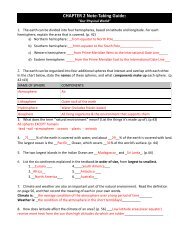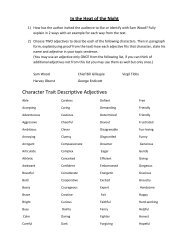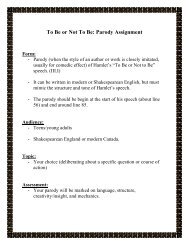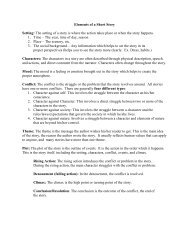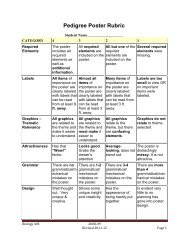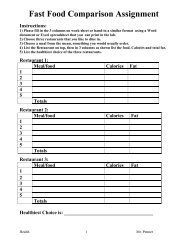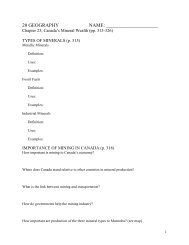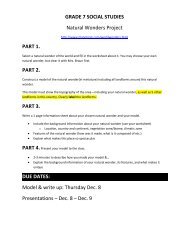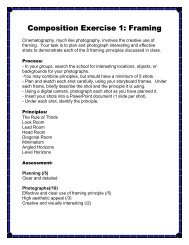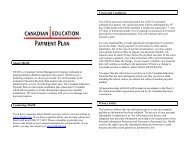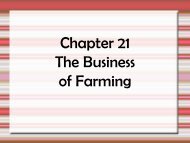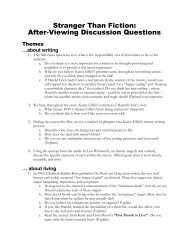Quoting, Paraphrasing, and Summarizing
Quoting, Paraphrasing, and Summarizing
Quoting, Paraphrasing, and Summarizing
Create successful ePaper yourself
Turn your PDF publications into a flip-book with our unique Google optimized e-Paper software.
<strong>Quoting</strong>, <strong>Paraphrasing</strong>, <strong>and</strong> <strong>Summarizing</strong><br />
Quotations must be identical to the original, using a narrow segment of the source. They must match<br />
the source document word for word <strong>and</strong> must be attributed to the original author.<br />
<strong>Paraphrasing</strong> involves putting a passage from source material into your own words. A paraphrase<br />
must also be attributed to the original source. Paraphrased material is usually shorter than the original<br />
passage, taking a somewhat broader segment of the source <strong>and</strong> condensing it slightly.<br />
<strong>Summarizing</strong> involves putting the main idea(s) into your own words, including only the main<br />
point(s). Once again, it is necessary to attribute summarized ideas to the original source. Summaries<br />
are significantly shorter than the original <strong>and</strong> take a broad overview of the source material.<br />
Why use quotations, paraphrases, <strong>and</strong> summaries?<br />
Quotations, paraphrases, <strong>and</strong> summaries serve many purposes. You might use them to . . .<br />
Provide support for claims or add credibility to your writing<br />
Refer to work that leads up to the work you are now doing<br />
Give examples of several points of view on a subject<br />
Call attention to a position that you wish to agree or disagree with<br />
Highlight a particularly striking phrase, sentence, or passage by quoting the original<br />
Exp<strong>and</strong> the breadth or depth of your writing or<br />
Writers frequently intertwine summaries, paraphrases, <strong>and</strong> quotations.<br />
How to use quotations, paraphrases, <strong>and</strong> summaries<br />
Practice summarizing the following essay, using paraphrases <strong>and</strong> quotations as you go. It might be<br />
helpful to follow these steps:<br />
Read the entire text, noting the key points <strong>and</strong> main ideas.<br />
Summarize in your own words what the single main idea of the essay is.<br />
Paraphrase important supporting points that come up in the essay.<br />
Consider any words, phrases, or brief passages that you believe should be quoted directly.<br />
There are several ways to integrate quotations into your text. Often, a short quotation works well<br />
when integrated into a sentence. Longer quotations can st<strong>and</strong> alone. Remember that quoting should<br />
be done only sparingly; be sure that you have a good reason to include a direct quotation when you<br />
decide to do so. You'll find guidelines for citing sources <strong>and</strong> punctuating citations at our<br />
documentation guide pages.<br />
http://owl.english.purdue.edu/owl/resource/563/01/
Paraphrase: Write it in Your Own Words<br />
<strong>Paraphrasing</strong> is one way to use a text in your own writing without directly quoting source<br />
material. Anytime you are taking information from a source that is not your own, you need to<br />
specify where you got that information.<br />
A paraphrase is...<br />
Your own rendition of essential information <strong>and</strong> ideas expressed by someone else,<br />
presented in a new form.<br />
One legitimate way (when accompanied by accurate documentation) to borrow from a<br />
source.<br />
A more detailed restatement than a summary, which focuses concisely on a single main<br />
idea.<br />
<strong>Paraphrasing</strong> is a valuable skill because...<br />
It is better than quoting information from an undistinguished passage.<br />
It helps you control the temptation to quote too much.<br />
The mental process required for successful paraphrasing helps you to grasp the full<br />
meaning of the original.<br />
6 Steps to Effective <strong>Paraphrasing</strong><br />
1. Reread the original passage until you underst<strong>and</strong> its full meaning.<br />
2. Set the original aside, <strong>and</strong> write your paraphrase on a note card.<br />
3. Jot down a few words below your paraphrase to remind you later how you envision<br />
using this material. At the top of the note card, write a key word or phrase to indicate<br />
the subject of your paraphrase.<br />
4. Check your rendition with the original to make sure that your version accurately<br />
expresses all the essential information in a new form.<br />
5. Use quotation marks to identify any unique term or phraseology you have borrowed<br />
exactly from the source.<br />
6. Record the source (including the page) on your note card so that you can credit it<br />
easily if you decide to incorporate the material into your paper.<br />
http://owl.english.purdue.edu/owl/resource/563/01/
The original passage:<br />
Some examples of a paraphrase<br />
Students frequently overuse direct quotation in taking notes, <strong>and</strong> as a result they overuse<br />
quotations in the final [research] paper. Probably only about 10% of your final manuscript<br />
should appear as directly quoted matter. Therefore, you should strive to limit the amount of exact<br />
transcribing of source materials while taking notes. Lester, James D. Writing Research Papers.<br />
2nd ed. (1976): 46-47.<br />
A legitimate paraphrase:<br />
In research papers students often quote excessively, failing to keep quoted material down to a<br />
desirable level. Since the problem usually originates during note taking, it is essential to<br />
minimize the material recorded verbatim (Lester 46-47).<br />
An acceptable summary:<br />
Students should take just a few notes in direct quotation from sources to help minimize the<br />
amount of quoted material in a research paper (Lester 46-47).<br />
A plagiarized version:<br />
Students often use too many direct quotations when they take notes, resulting in too many of<br />
them in the final research paper. In fact, probably only about 10% of the final copy should<br />
consist of directly quoted material. So it is important to limit the amount of source material<br />
copied while taking notes.<br />
Example Summary, Paraphrase, <strong>and</strong> Quotation in an Essay:<br />
Example summary: Roger Sipher makes his case for getting rid of compulsory-attendance laws<br />
in primary <strong>and</strong> secondary schools with six arguments. These fall into three groups—first that<br />
education is for those who want to learn <strong>and</strong> by including those that don't want to learn, everyone<br />
suffers. Second, that grades would be reflective of effort <strong>and</strong> elementary school teachers<br />
wouldn't feel compelled to pass failing students. Third, that schools would both save money <strong>and</strong><br />
save face with the elimination of compulsory-attendance laws.<br />
Example paraphrase: Roger Sipher concludes his essay by insisting that schools have failed to<br />
fulfill their primary duty of education because they try to fill multiple social functions.<br />
Example quotation: According to Roger Sipher, a solution to the perceived crisis of American<br />
education is to "Abolish compulsory-attendance laws <strong>and</strong> allow only those who are committed to<br />
getting an education to attend" (Page#).<br />
http://owl.english.purdue.edu/owl/resource/563/01/




